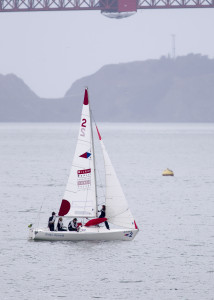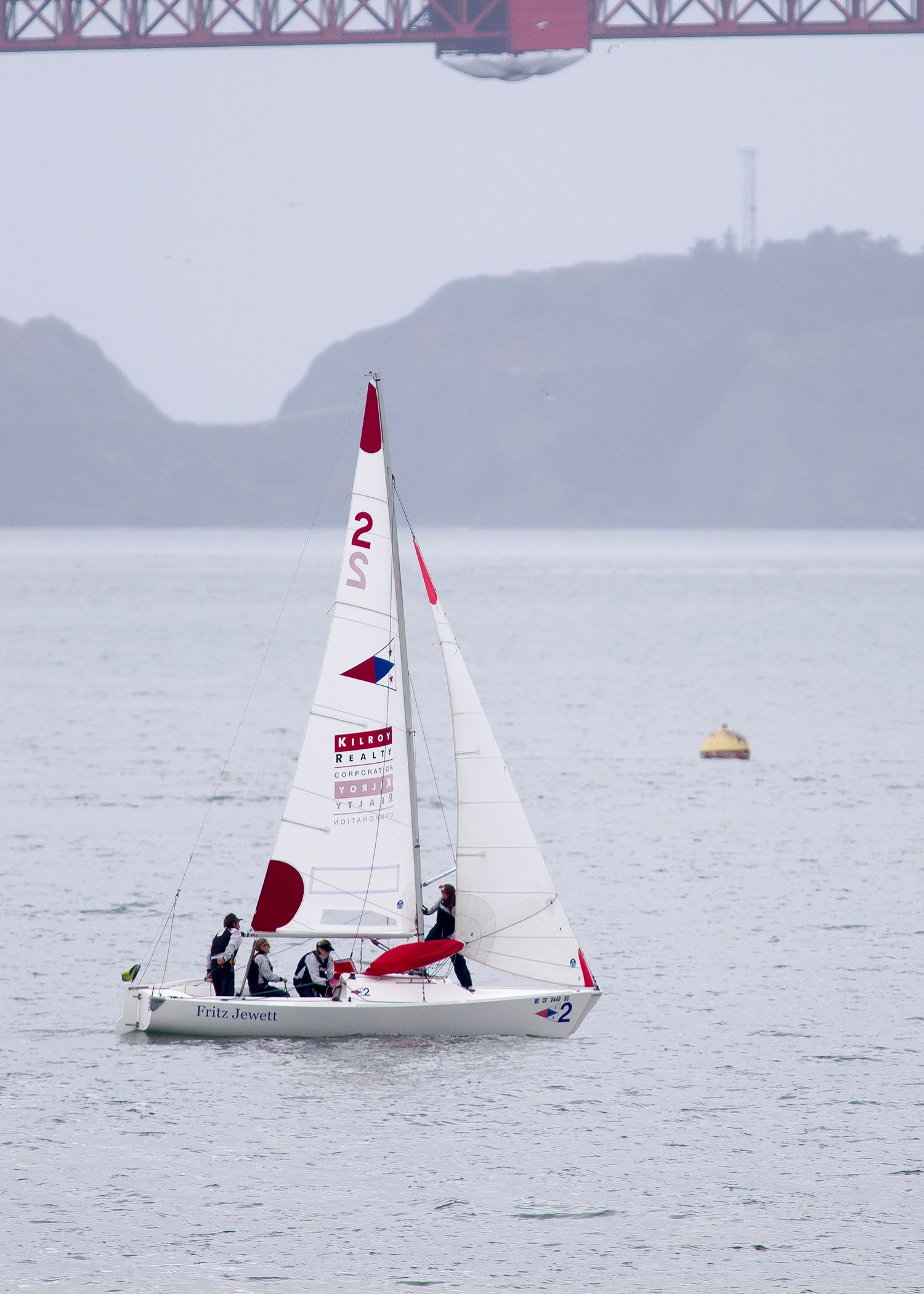Stanford sailing, ranked first in the nation in co-ed fleet and team racing and fifth in women’s fleet, finished conference championships this past weekend with a first place finish in the team event, sweeping all nine races and qualifying for nationals in the team event in one month.
Stanford has finished first in the PCCSC Championships for all three sailing events, including the co-ed and female fleet events, in addition to team racing.

Fleet racing is what most would consider “traditional sailing,” with each sailor competing as an individual against 17 others to get through the course as quickly as possible.
“The goal [of team racing] is to work together to get in the best combination to win, so to do that we have a whole playbook. Let’s say I’m sailing and my teammate is behind, I can trap the competitor and let my teammate pass to get ahead and get into a better combination,” said senior Tally Buckstaff. “It really involves working together and talking and figuring out how to get our team in the best situation possible. So it’s very dynamic and you have to work well with your teammates, so that’s why it’s our favorite event.”
Team racing involved three Stanford boats, each with two sailors, going up against a group of three boats from its competitor. The goal is to get all three boats into the best sequence so that they all finish near the top. It boils down to using the rules and concepts of fleet racing in combination with coordinating and working with two other boats to maximize their score at the finish line.
“It’s kind of like chess but with an athletic component,” said senior Kelly Ortel. “It’s very tactical, but you’re also having to work hard and it can be physically exhausting. There’s a lot of inter-boat communication and making sure the boat handling is in sync with everything else that is happening. It can be stressful if you don’t trust your teammates but we’re at a good point where we are on the same page and we can trust each other to do our jobs.”
This year Stanford has an experienced roster with 11 seniors, six of which make up the core group of starters for team racing. At the start of their collegiate careers, Stanford was ranked just 16th in the nation and was not considered to be a viable team for nationals. Four years later, the current senior class has seen the program progress into the powerhouse it is today. The seniors now have a month to prepare for another shot at the national title, which the team missed out on last year.
The Card, however, are at a disadvantage heading into nationals. Since most other schools are finished with the academic year, they are able to dedicate all of their time on campus to sailing and don’t have to contend with finals the week of competition. In addition, the top sailing schools in the nation are all on the East Coast within driving distance of one another, and so are able to practice against the top competitors during the month-long drought of formal competition. Stanford, however, is isolated from those top schools because of its West Coast location.
“We’ve done really well in our regular season and we’ve pretty much won everything, but they are going to get better so we need to get better,” Buckstaff said.
While West Coast schools have historically not been as competitive in sailing as East Coast schools, Stanford’s budget allows it to travel to the East Coast regularly during the season to race against the top schools before nationals. This advantage creates a disparity between Stanford and other PCCSC schools that do not have the caliber of Stanford sailing.
“We are lucky in the sense that our second team is really, really good so the team that we’ll be practicing against could go and win a national championship in team racing so we can go up against those guys who are really good,” Buckstaff said.
Another disadvantage that Stanford faces in the next month is emulating race-day conditions. The West Coast is typically much windier than the nationals venue in Maryland, so East Coast schools have the advantage of practicing under more race-like conditions.
History has also proven to the Card that it is easy for the team to peak at the conference championships and then become complacent in the month preceding nationals. Thus, it will be imperative for Stanford to keep up its competitive spirit and maintain its current drive.
“The biggest challenge ahead of us right now is just staying motivated and on top of our game at practice to make practices as nationals-like at possible,” said Ortel.
ICSA National championships begin on May 27 and conclude on June 5 in Maryland.
Contact Ashley Westhem at awesthem ‘at’ stanford.edu.
